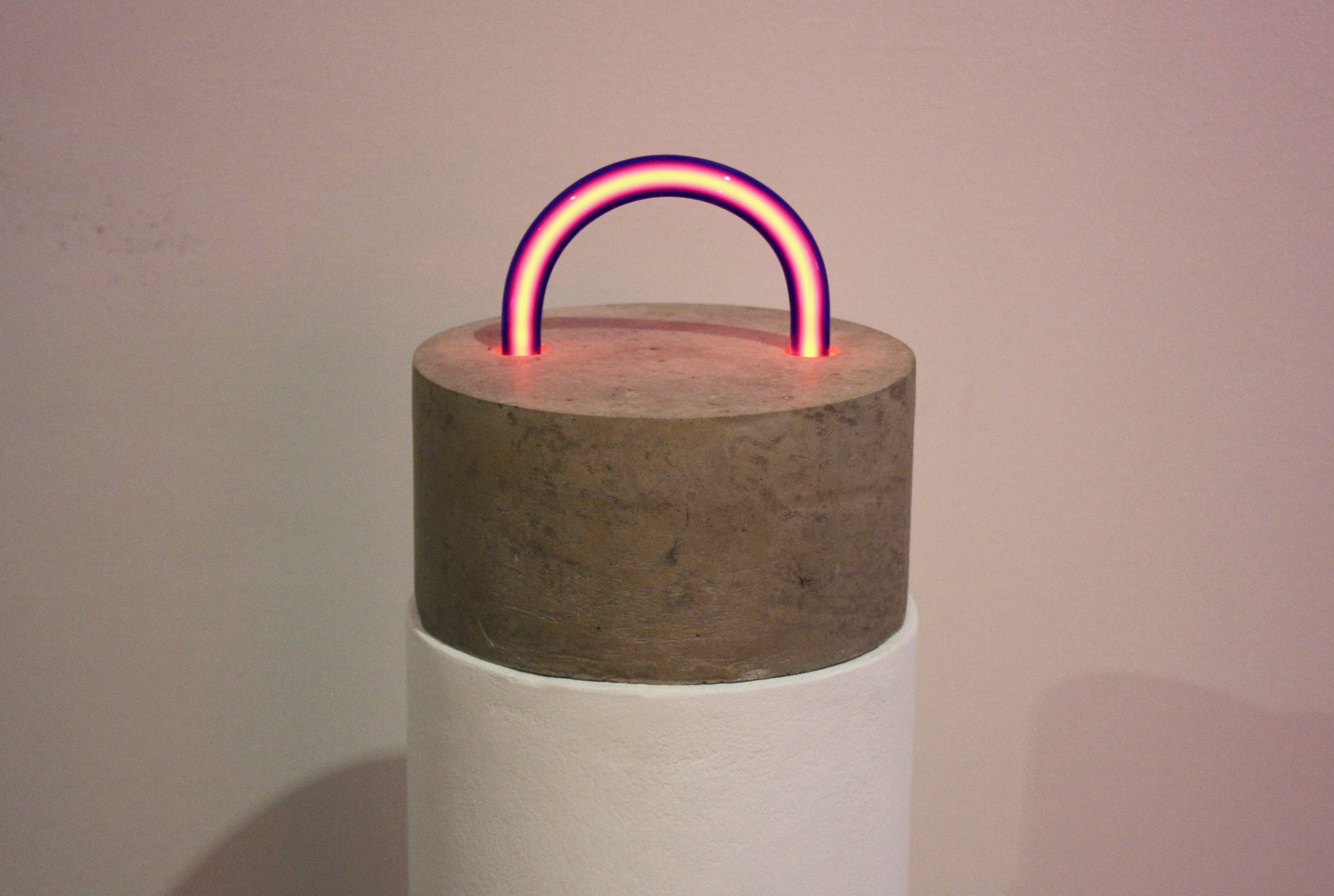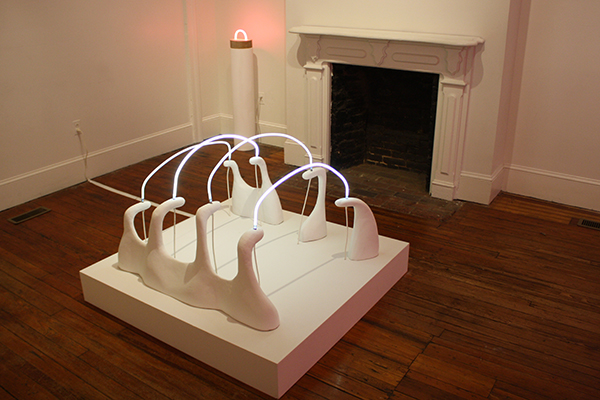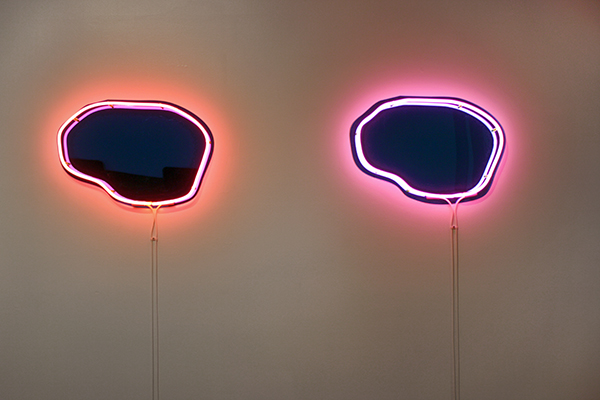Esther Ruiz: The Whole is Other than the Sum of its Parts
Platform Gallery
116 West Mulberry Street
Baltimore, MD
On view through 8/31 with an artist talk on 8/30
Is there any medium native to the 20th-century more romantic yet versatile than neon lighting? In its roughly 100-year history, neon has been successively used with powerful effect in everything from glamorous Art Deco architecture, noir films, minimalist Dan Flavin installations, pop art, sci-fi, and the alternately cheeky/schlocky text pieces of Tracey Emin. What’s remarkable about the material is its ability to simultaneously define an artwork’s aesthetic while reading entirely differently depending on context.
As such, what better implement of drawing to illustrate a textbook on Gestaltism, the theory that the mind constructs an understanding of the whole from observing fragments? Esther Ruiz’s solo exhibition The Whole is Other than the Sum of its Parts takes its name from the Gestalt psychologist Kurt Koffka’s quote, which has been famously mistranslated as “The whole is greater than the sum of the parts.” And here, Ruiz’s playful work is calculatedly crisp—individual components of sculptural assemblages never fully disappear into the aggregation. Collectively, however, they make allusions to the legacy of minimalism, sci-fi landscapes, and cinema.
In “Second Sun,” an arc of neon tube lighting emerges from a cement cylinder. At face value, it wouldn’t have looked out of place in the minimalist-Mecca desert town of Marfa circa 1977. But its title suggests the desert planet Tatooine from 1977’s Star Wars—a film Ruiz has cited as an influence in her work. Given this prompt, it’s easy to find the right perspective and squint until the polychromatic arc registers as an alien celestial body setting behind a barren, otherworldly horizon.
Similarly, a trio of smaller pieces use cement cylinders as pedestals for geological specimens framed by arcs of colored glass tubes. In “Case Settings,” “Auxiliary,” and “Findings” the materials are obvious—we recognize the geode or crystal as a natural wonder, perhaps encased for study in a laboratory from a campy science fiction flick. But there’s a slightly-less obvious association with landscape dioramas: What might a mountain range or crystalline cave look like under the rings of a distant planet? More curiously, the individual components of the pieces—geodes, glass, concrete—have various romantic associations with conventional beauty. But these arrangements as a whole seem to present themselves as playfully awkward rather than entirely precious—they border on nerdy in a wholly endearing way, more like a teenager’s intimate scrapbook than a colonizing wunderkammer.
That play between the awkward and elegant is best exemplified by the sculpture “Bones”, in which an allusion to a half-buried ribcage has seen the costal cartilage replaced by arcs of neon tubes. Its scale, however, seems ergonomically tailored to enclose a human figure, rather than be enclosed within the body. It evokes the corpse of a mythical beast—one large enough that its remains become a surreal landscape feature. But for me, it’s mostly reminiscent of the famous “This is my art and it is dangerous!” scene from Beetlejuice, in which Delia Deetz is trapped by her sculptures (which were actually the brilliant work of Ed Nunnery). The piece is equally inviting and ominous—a piece of glowing architecture that threatens to ensnare those who enter.
Seductive materials again lure the viewer to “Well’, a series of blue plexiglass mirrors framed by pink neon, hung—naturally—at eye-level. Gallerists Lydia Pettit and Abigail Parrish described them as “the most selfie-Instagramed work we’ve ever shown.” But again, there’s a dissonance between the materials, their apparent use, and their aesthetic consideration. They’re not inherently pleasing forms—asymmetrical and lumpy, their gestalt seems at odds with the sleekness of their medium. Viewed as series of four, that impression is reinforced by their repetition; they become a dystopian sky populated by malfunctioning-assembly-line clouds, or perhaps the wall of a fantasy beauty salon.
But the real lure to The Whole is Other than the Sum of its Parts is “Bifröst II”, installed in the gallery’s storefront. The title is borrowed from Norse mythology, referencing the ethereal bridge between our corporeal world and the celestial Asgard of the gods. Whether it’s considered as a functionally asymmetrical bridge to a higher plane or a slightly lopsided triumphal arch commemorating the uncertain legacy of minimalism, it’s a fitting gateway to Ruiz’s world of allusion, fantasy, and so much neon.







Comments on this entry are closed.